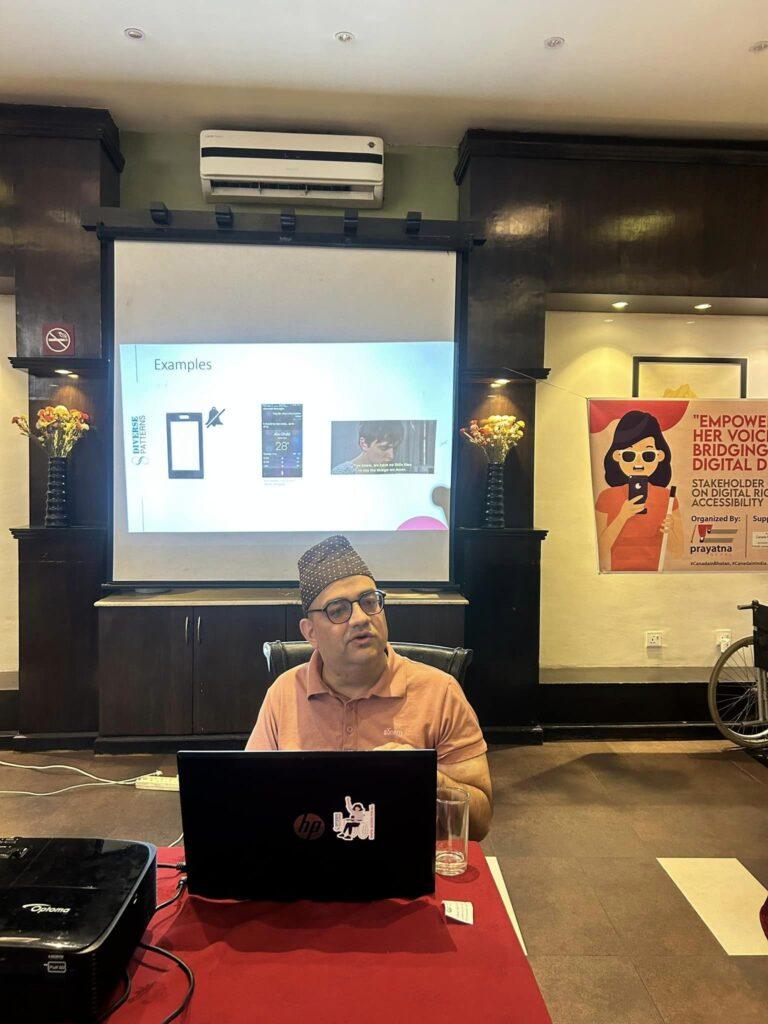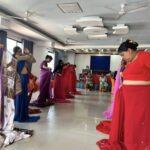
Prayatna Nepal, a self-help organization dedicated to empowering visually impaired women and girls, recently conducted a consultation on digital accessibility on national and international laws, policy, frameworks, universal design and accessibility standards to content developers, IT professionals, government representatives, private sector stakeholders, and representatives from Organizations of Persons with Disabilities (OPDs). The organization, established by a group of women both with and without visual impairments, possess a diverse board with 71% of its members, including the chairperson, being visually impaired. This inclusive approach aims to foster a comprehensive understanding and collaborative effort to enhance the social, cultural, economic, environmental, and political lives of visually impaired women.
The consultation commenced with a warm welcome from Ms. Sarita Lamichhane, Chairperson of Prayatna Nepal, followed by a brief round of introductions. Mr. Sagar Prasai, the facilitator, initiated the session with a pretest using Google Forms. Participants were then asked to share their expectations online via mentimeter.
Ms. Lamichhane began the educational portion of the event with an in-depth presentation on disability concepts. She covered various types and severity levels of disabilities, as well as the classification system used for disability cards. This comprehensive overview provided attendees with a solid foundation for understanding the challenges faced by individuals with disabilities.
Mr. Prasai then delved into the core topic of digital accessibility. His presentation covered several key areas:
- Definition and process of digital accessibility
- Assistive technology and its importance
- The concept of digital accessibility as universal access
- Specific assistive technologies for visually impaired individuals
He defined digital accessibility as the practice of creating and maintaining digital content and technologies that are usable by everyone, including persons with disabilities. This involves designing websites, apps, and documents to be compatible with assistive technologies and accessible to those with visual, auditory, motor, or cognitive impairments. By incorporating features like screen reader compatibility and alternative text for images, digital accessibility ensures that all users can engage with online resources, regardless of their abilities or how they access digital content.
The second session focused on the technical aspects of digital accessibility:
- The four principles of digital accessibility
- Digital accessibility standards
- The World Wide Web Consortium (W3C)
- Web Content Accessibility Guidelines (WCAG) 2.1
Mr. Prasai elaborated on the principles of digital accessibility: Perceivable, Operable, Understandable, and Robust. He discussed practical applications such as writing accessible Nepali content, using alternative text, incorporating sign language, captions, and audio descriptions. He also shared news about YouTube's upcoming Multiple Track Audio feature.
Emphasizing WCAG 2.1 as a crucial aspect of digital accessibility, Mr. Prasai explained that these guidelines aim to make content more usable for people with various disabilities across different devices. He highlighted essential considerations for creating accessible content, including large print options, avoiding color-only information, color contrast, proper document structure, and accessible images and links.
He also discussed practical applications such as writing accessible Nepali content, using Alternative text, incorporating sign language, captions, and audio descriptions. Additionally, Mr. Prasai shared exciting news about YouTube's upcoming Multiple Track Audio feature.
He emphasized WCAG 2.1 as one of the crucial aspects of digital accessibility. He explained WCAG 2.1 offers a broad set of recommendations to improve web accessibility. These guidelines aim to make content more usable for people with various disabilities, including visual, auditory, motor, speech, and cognitive impairments. While not exhaustive, they cover a wide range of needs and apply web content across different devices. Implementing these guidelines not only helps people with disabilities but often enhances the overall user experience for everyone.
Following a lunch break and an energizing activity led by Ms. Lamichhane, participants viewed a video on developing accessible IEC materials produced by Prayatna Nepal. Ms. Lamichhane then provided practical using screen reader on laptop to showcase how visually impaired people use laptops using assistive technology of the theoretical concepts discussed earlier. She also highlighted specific features of websites and documents that could be either accessible or inaccessible to screen reader users, providing insights into the practical implications of digital design choices for visually impaired individuals. Mr. Prasai then took over the practical session where the attendees had the opportunity to practice creating accessible digital content in Microsoft Word, Excel, PowerPoint, and various social media platforms.
The consultation concluded with closing remarks from Ms. Lamichhane, who expressed gratitude for everyone's time, enthusiasm, and active participation. Each participant made a commitment to apply their newly acquired knowledge in their personal and professional lives, ensuring a lasting impact from the event.
#CanadainBhutan, #CanadainIndia, #CanadainNepal; #CFLI and #CanadaFund


